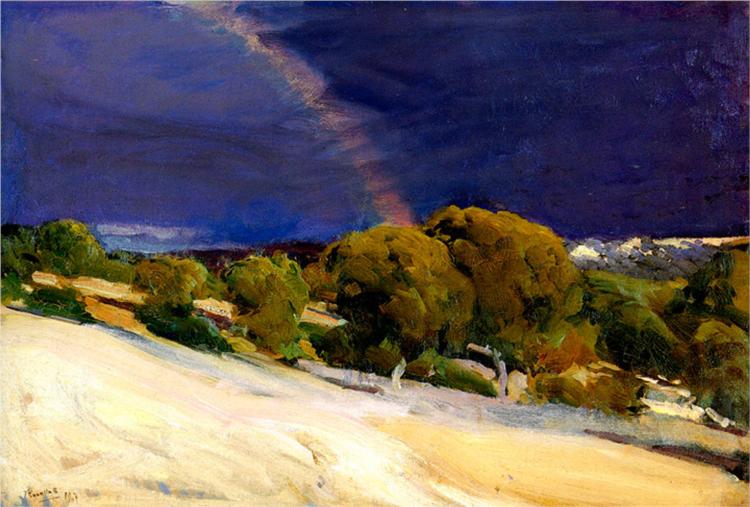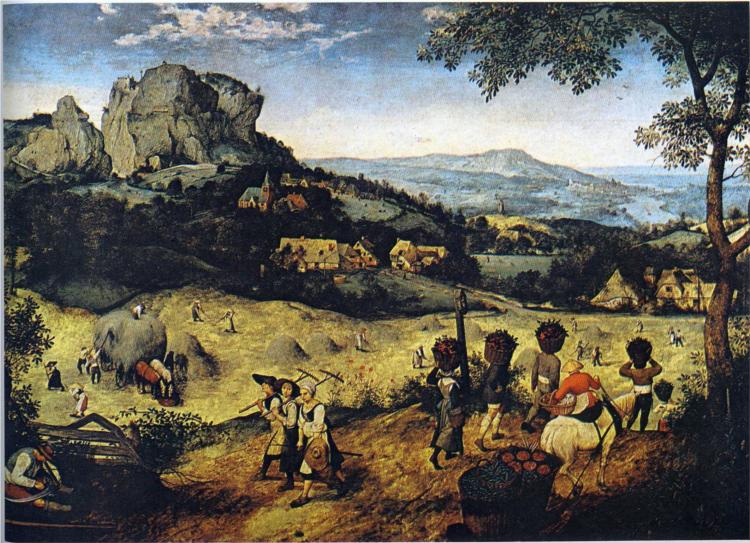
- The Rainbow. Joaquín Sorolla. 1907.
De colores
De colores, de colores
Se visten los campos en la primavera.
De colores, de colores,
Son los pajaritos que vienen de afuera.
De colores, de colores
Es el arco iris que vemos lucir.
Y por eso los grandes amores
De muchos colores me gustan a mí.
Y por eso los grandes amores
De muchos colores me gustan a mí.
Canta el gallo, canta el gallo
Con el quirí, quirí, quirí, quirí, quirí—
La gallina, la gallina
Con el cara, cara, cara, cara, cara—
Los pollitos, los pollitos
Con el pío, pío, pío, pio, pí.
Y por eso los grandes amores
De muchos colores me gustan a mí.
Y por eso los grandes amores
De muchos colores me gustan a mí.
This Spanish folk song, and the painting by Spanish impressionist Joaquín Sorolla, are featured on Wrestle with the Angel in honor of Hispanic Heritage Month, September 15-October 15.
“De colores” (“Of Colors”) is a Spanish folk song celebrating the beauty of creation and its many bright colors. The chorus may be translated as “The great love of many colors is mine.” The melody has been popular in the Americas at least since the sixteenth century, having been brought to the Western hemisphere with Spanish colonization. There are many verses and variations now sung around the world, but these are the two verses I know best. You can listen to this folk song on YouTube. <http://www.youtube.com/watch?v=rJmwUYoJtVY>

